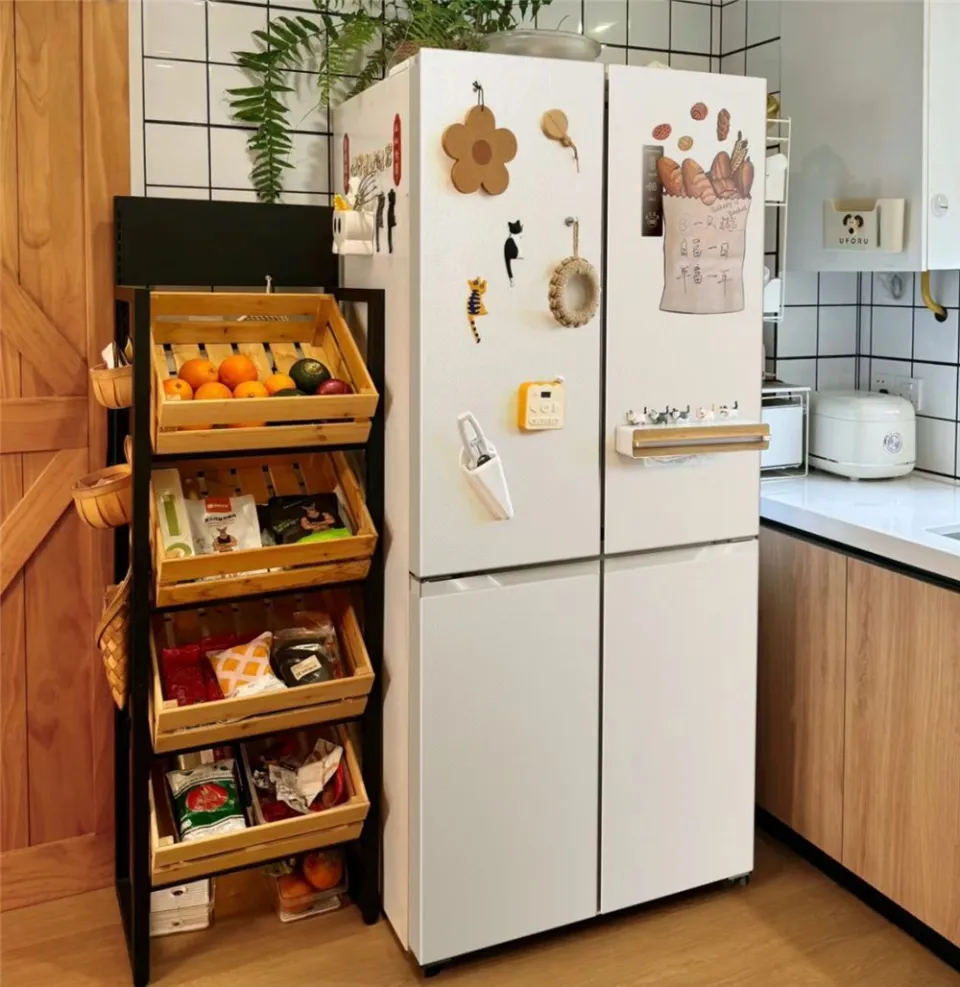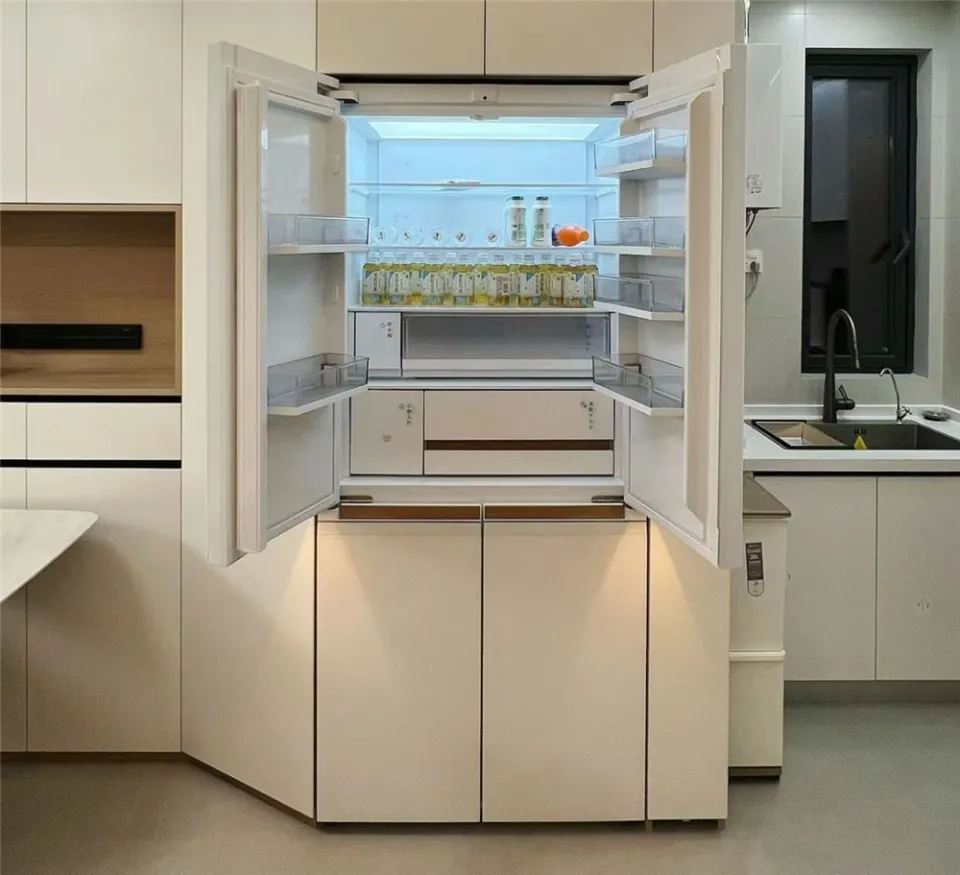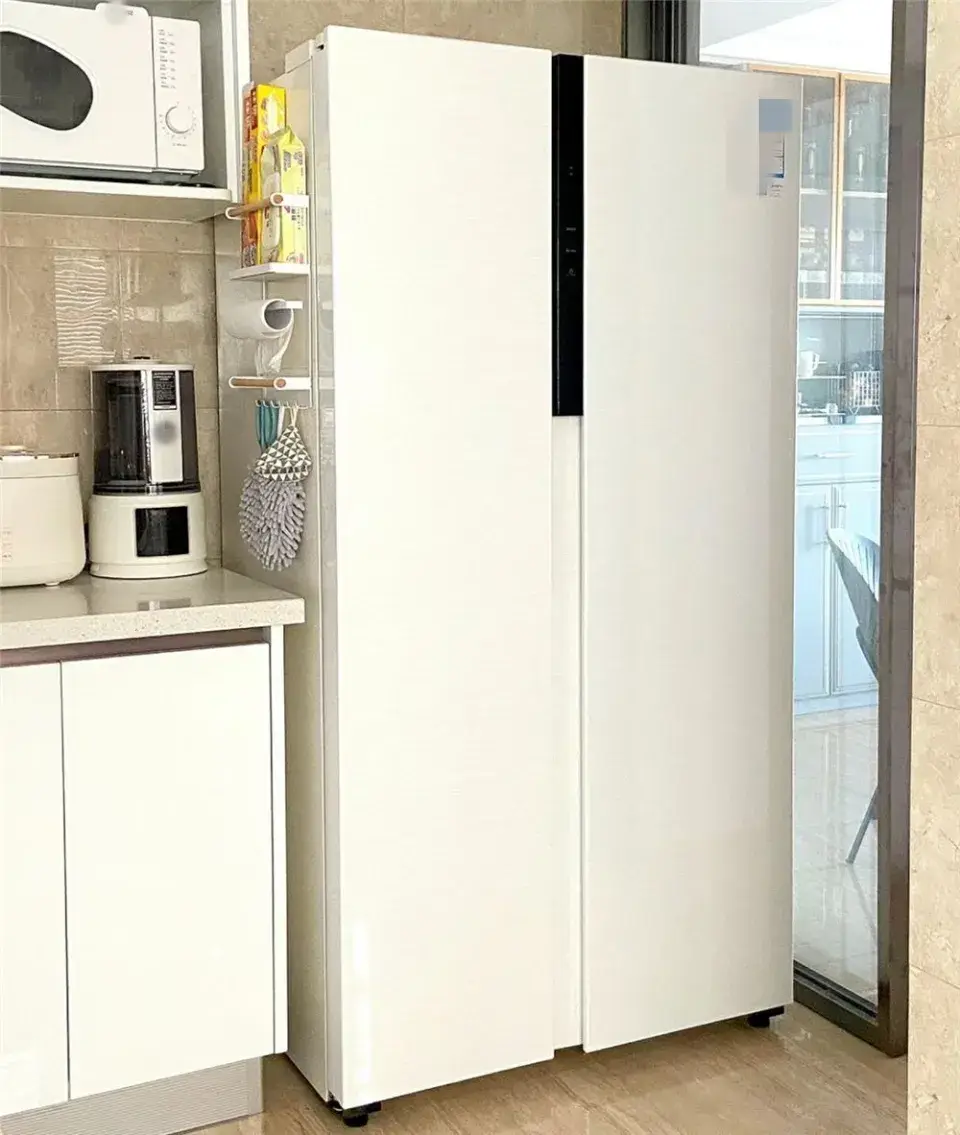While those who are knowledgeable are not easily swayed by outward appearances. They focus solely on the following eight core factors.

1. Refrigerator door style and internal partitioning
Refrigerator door designs today come in a variety of styles, including French, symmetrical, cross, and Japanese, each with its own pros and cons.
Based on personal experience, I highly recommend French and Japanese-style refrigerators with the freezer on top. These designs feature two wide-opening doors, providing easy access to the freezer compartment, which is typically located at the bottom in the form of a spacious and conveniently organized drawer.
Cross-style refrigerators are also a decent option, but their bottom freezers tend to be on the smaller side, making it challenging to accommodate larger items such as bones or whole cuts of meat. On the other hand, symmetrical two-door refrigerators are less ideal as they can be inconvenient for retrieving items, offer limited storage capacity, and require the entire door to be opened, compromising their ability to retain cold air.

2. Should you opt for a built-in refrigerator?
Whether you’re designing a built-in kitchen or not, I strongly suggest choosing a built-in refrigerator, especially a fully built-in model. This type of refrigerator doesn’t require as much clearance when opening the door and typically features a slim, sleek design that complements modern aesthetics.
In contrast, conventional refrigerators tend to be bulkier and require extra space around them for ventilation and door clearance, which can hinder the flexibility of your kitchen layout.

3. Prioritize a metal exterior
Refrigerators typically feature either a glass or metal exterior. In my experience, a metal exterior is the more prudent choice as it tends to stay cleaner, maintains its color better, and is less prone to showing smudges and fingerprints.
While a glass exterior may look sleek initially, over time it can become a magnet for grease, fingerprints, and, if the quality is inferior, even cracks or shatters. Unless your budget allows for a consideration of higher-end options with synthetic stone exteriors, it’s best to steer clear of glass doors.

4. Opt for bottom-vented refrigerators
When it comes to built-in refrigerators, bottom-vented models are generally more versatile in terms of kitchen design. Since the bottom of the refrigerator is typically unobstructed by cabinets, bottom venting is more effective and doesn’t require clearance on the sides, making it a practical choice.

5. Choose a fan-cooled (air-cooled) refrigerator
Most modern refrigerators employ fan cooling, but there are still some models that use direct cooling, which doesn’t utilize a fan.
The key difference is that fan-cooled refrigerators provide faster cooling, prevent ice buildup, and maintain a more consistent temperature throughout. Direct-cooled refrigerators, on the other hand, are prone to freezing and inconsistent temperatures. A side-by-side comparison of the two types will quickly highlight these disparities.

6. Go for a dual-system refrigerator
Dual-system refrigerators, also known as two-cycle refrigerators, feature two independent cooling systems, each serving a separate compartment (refrigerator and freezer). These separate cooling systems generate distinct air currents, allowing for better temperature and humidity control, minimizing odor mixing, and prolonging the freshness of your food.
While single-system refrigerators don’t always suffer from odor mixing, opting for a dual-system model is a wiser choice.

7. Prioritize inverter refrigerators with energy-efficiency ratings
Inverter refrigerators are not only energy-efficient but also operate more quietly. Look for models with an energy efficiency label of at least Grade 1 (the highest grade).
Since refrigerators run continuously throughout the year, energy efficiency is a crucial consideration. The annual savings on your electricity bill can easily offset the higher initial cost of an energy-efficient model.

8. Avoid choosing a refrigerator with a small capacity
Lastly, don’t underestimate the importance of capacity. Even a family of three can quickly fill a 500-liter refrigerator. If space is limited, aim for a minimum capacity of 400 liters. Anything smaller will likely lead to a cramped refrigerator and insufficient storage space for your food items.
In summary, experienced individuals focus on these eight critical factors when choosing a refrigerator. Unfortunately, not everyone is aware of these considerations, leading many families to purchase refrigerators that don’t meet their needs, resulting in a less-than-ideal experience for years to come.

































